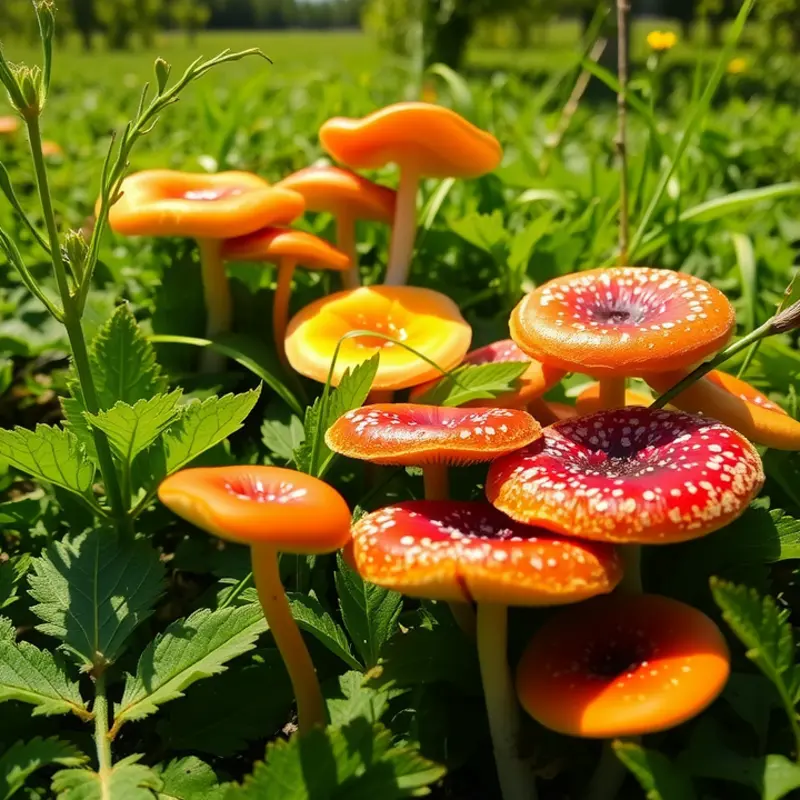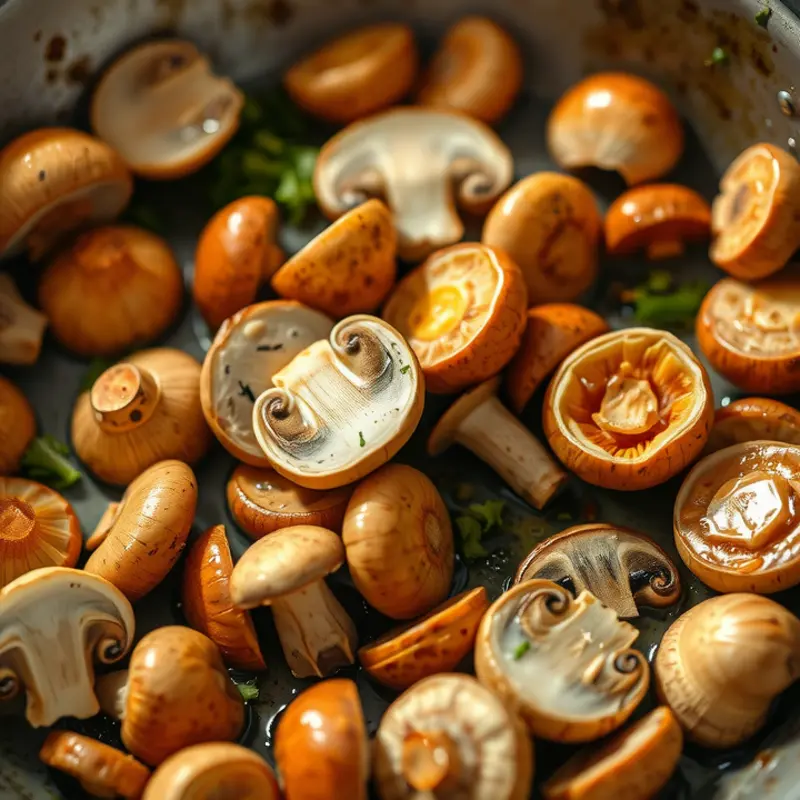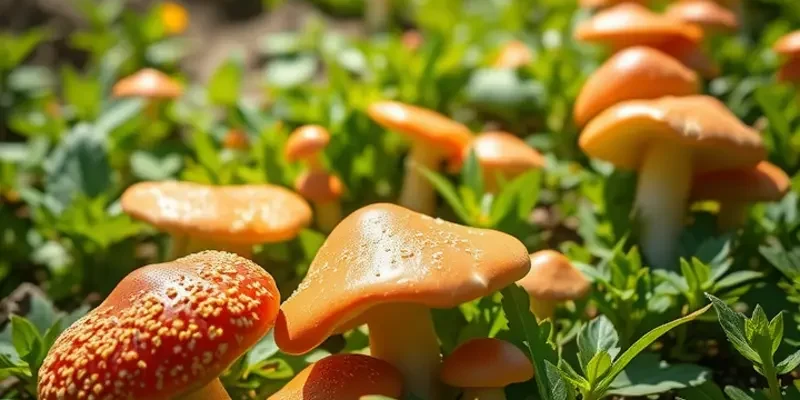Sautéing mushrooms is a fundamental kitchen skill that enhances a variety of dishes. With their rich, earthy flavors and meaty textures, mushrooms can elevate everything from pastas to soups. This guide aims to share best practices and techniques for sautéing mushrooms effectively, making them a delicious addition to your culinary repertoire. Whether you’re a novice cook or seasoned chef, these easy-to-follow tips will help you achieve perfectly sautéed mushrooms every time.
Choosing the Right Mushrooms

The path to perfectly sautéed mushrooms begins with selecting the right type for your culinary needs. Varieties like button, cremini, and shiitake each bring unique flavors and textures to the table. Understanding these can elevate your dish from ordinary to extraordinary.
Button mushrooms, also known as white mushrooms, are perhaps the most common and accessible. They have a mild flavor that intensifies when sautéed, offering a reliable base for various dishes. Their firm texture holds up well to cooking, making them a versatile choice for those new to mushroom preparations.
On the other hand, cremini mushrooms—sometimes labeled as baby bellas—are essentially a more mature version of the button mushroom. They present a deeper, earthier flavor profile and a slightly denser texture. Sautéing enhances these qualities, lending a richer taste to your dishes. Their robust nature allows them to pair well with bold ingredients like garlic and wine.
Shiitake mushrooms, distinct with their wide caps and woody stems, offer a meaty texture and umami-rich taste. When sautéed, they unleash a savory depth that complements both Asian and Western cuisines. Proper preparation involves removing the fibrous stems before cooking, as these do not become tender with heat.
Selecting fresh mushrooms is crucial. Look for mushrooms that are firm, plump, and dry to the touch. Avoid specimens with blemishes or excessive moisture, which indicate aging or poor storage. A good sniff should reveal a fresh, earthy aroma free of any pungent or off-putting scents.
Once you’ve selected your mushrooms, proper cleaning is essential. Contrary to popular belief, a quick rinse under cold water won’t harm them, provided you dry them thoroughly with paper towels. This method removes any residual dirt without compromising their integrity. For a more meticulous approach, use a damp cloth or soft brush to wipe each mushroom, ensuring all soil and debris are cleared.
Maximizing both flavor and texture starts with proper preparation. Slice mushrooms evenly to ensure consistent cooking. Slicing too thin may lead to overcooking, while thick cuts could result in uneven texture. Aim for a quarter-inch thickness for optimal results.
Incorporating these techniques not only enhances the taste but also aligns with principles of mindful cooking. For additional insights on food techniques and efficiency, you might find this guide useful to streamline your kitchen prep without sacrificing quality. By choosing the right mushrooms and preparing them thoughtfully, you’re setting the stage for a sautéing success story.
Sautéing Techniques for Perfect Mushrooms

Achieving perfectly sautéed mushrooms relies on a keen understanding of several important techniques. To begin, achieving the optimal heat is crucial. Using medium-high heat provides a balance between achieving a golden-brown sear and maintaining moisture within the mushrooms. Preheat your pan for a few minutes before adding any oil. This ensures that the mushrooms sizzle upon contact, allowing them to sauté rather than steam.
The choice of oil plays a significant role in the flavor profile. Opt for oils with higher smoke points for a crispier result. Olive oil adds a rich aroma that complements the earthy mushroom flavor, while grape seed or canola oil offer neutrality that lets the mushroom’s natural taste shine. For added richness, consider a small knob of unsalted butter towards the end of cooking.
Different mushroom varieties require varying sautéing times. Thin-sliced white button mushrooms or creminis typically take about 5 to 8 minutes, while thicker varieties like portobellos may require up to 10 minutes. More delicate mushrooms, like shiitakes, demand shorter sautéing times but develop deep flavor layers quickly. Regardless of variety, resist the urge to constantly stir them to allow each side to properly caramelize.
Avoiding overcrowding the pan is a common pitfall. Ensure the mushrooms are in a single layer to promote even cooking and browning. Overcrowded pans trap moisture, leading to a soggier result rather than the desired deep-brown finish.
Timing is critical. Overcooking mushrooms can lead to nutrient loss and a rubbery texture. Catch them at the peak of tenderness—when they are browned yet still plump. Proper technique illuminates the mushrooms’ savory depth and ensures they complement whatever dish they’re intended for.
To integrate these techniques more effortlessly, consider batch cooking your mushrooms, which allows more control over cooking consistency and timing. For further guidance on practical ingredient batching, refer to Practical Ingredient Batching, which offers tips on making your cooking experience efficient and organized.
Mastering the art of sautéing mushrooms is about patience and precision. By perfecting heat management, selecting the right oil, being aware of sautéing times for different varieties, and avoiding overcrowding, you will transform your mushrooms into vibrant culinary masterpieces.
Final words
Learning to sauté mushrooms is a rewarding skill that can significantly enhance your cooking. By choosing the right mushrooms and employing effective sautéing techniques, you can create dishes that impress family and friends alike. Remember to focus on proper heat levels, choose quality ingredients, and avoid crowding your pan for the best results. With practice and creativity, you’ll find endless opportunities to incorporate perfectly sautéed mushrooms into your meals, enriching your culinary journey.







